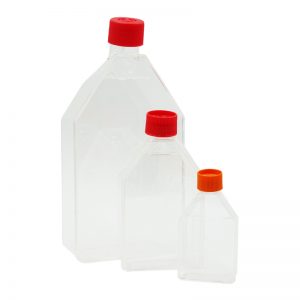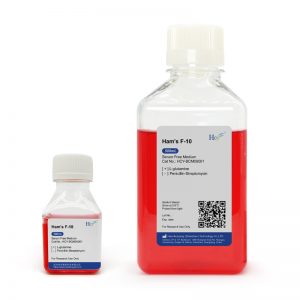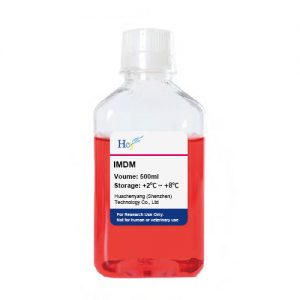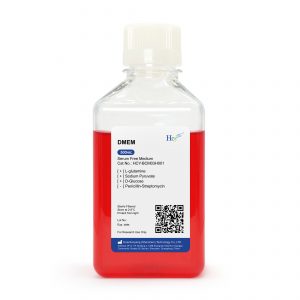Frequently Asked Questions (FAQ) on Cell Culture Medium
I. Selection of Cell Culture Medium
1. How to choose a suitable medium for my cells?
- Primary Reference: The medium used to establish the specific cell line is usually the first choice. Consult relevant literature or your cell supplier.
- Based on Cell Type and Experiment:
- Mouse cell lines are often cultured in RPMI 1640.
- For cell hybridization, gene transfer experiments, IMDM can be chosen.
- Empirical Method (Recommended): Culture cells in multiple media types and compare outcomes using indicators like growth curves and plating efficiency to select the optimal medium.
- Consult Authoritative Databases: The ATCC (American Type Culture Collection) website provides detailed culturing information for most cell lines, including recommended media, conditions, and related literature.
II. Storage and Shelf Life
2. Can liquid medium be stored at -20°C?
- No. Storage at -20°C can cause salts in the medium to precipitate. Upon thawing, these salts may not fully redissolve, leading to a decrease in osmolarity. This can cause cells to rupture and die.
3. How long can newly prepared liquid medium be stored?
- It is recommended to store newly prepared medium at 4°C protected from light and use it within one week. The fresher the medium, the better.
4. Can medium supplemented with serum and antibiotics be stored long-term?
- No. Once serum and antibiotics are added to fresh medium, it should be used within two to three weeks. Some antibiotics and essential components in serum begin to degrade after thawing.
5. Why does medium stored in the refrigerator turn dark red (alkaline)?
- When stored at 4°C, CO₂ gradually escapes from the medium, causing the pH to increase (become more alkaline). The pH indicator phenol red turns a darker red-purple under alkaline conditions.
- Solution: The pH can be adjusted by bubbling filter-sterilized CO₂ through the medium before use.
III. Components & Additives
6. Is it necessary to add antibiotics to the medium?
- Generally not recommended. Antibiotics should not be added to routine cultures to avoid masking subtle contaminations or exerting cytotoxic effects on the cells.
- Exception: To prevent bacterial/fungal contamination, Penicillin-Streptomycin (Pen-Strep) can be added. Common final concentrations are 100 U/mL Penicillin and 100 µg/mL Streptomycin.
7. Should antibiotic concentration be adjusted for serum-free culture?
- Yes, reduce the amount. Antibiotic concentration should be reduced by at least 50% compared to the concentration used in serum-containing media. Serum proteins bind and inactivate some antibiotics; this inactivation does not occur in serum-free conditions.
8. Why do some experiments require phenol red-free medium?
- Two main reasons:
- Hormonal Effects: Phenol red can mimic the effects of steroid hormones (particularly estrogen), interfering with experiments using hormone-sensitive cells.
- Interference with Detection: The fluorescence properties of phenol red can interfere with detection methods like flow cytometry.
9. What are the functions of common medium components?
- NaHCO₃ (Sodium Bicarbonate): Forms a buffering system with CO₂ to maintain stable pH in the incubator.
- Sodium Pyruvate: Serves as an alternative carbon source for cells (when glucose is low). Common final concentration is 1 mM.
- HEPES: A potent chemical buffer that provides additional pH stabilization, especially outside the CO₂ incubator environment. Common final concentration is 25 mM.
- Phenol Red: Acts as a pH indicator (Red = Neutral ~7.4, Yellow = Acidic, Purple = Alkaline).
- L-Glutamine: An essential amino acid for cells, involved in energy metabolism and protein synthesis. It is unstable in solution and must be stored frozen at -20°C. It is typically added to medium just before use. Common final concentration is 2 mM. Medium supplemented with glutamine should be re-supplemented if stored at 4°C for longer than 2 weeks.
IV. pH Influence
10. How does medium pH affect cell growth?
- The optimal pH for most cells is 7.2 – 7.4. Deviations from this range can be harmful.
- Cells generally tolerate mild acidity better than mild alkalinity.
- Note: The pH of liquid often increases by ~0.2 units after filtration through a 0.1µm or 0.2µm filter.
11. Why does our RPMI 1640 medium appear yellow? Is the pH wrong?
- This is normal. Due to its formulation, RPMI 1640 is a low phenol red variant; it contains only one-fourth the amount of phenol red found in DMEM. The lighter, yellowish color is due to this lower concentration, not an incorrect low pH.
 A professional supplier of swabs
A professional supplier of swabs




